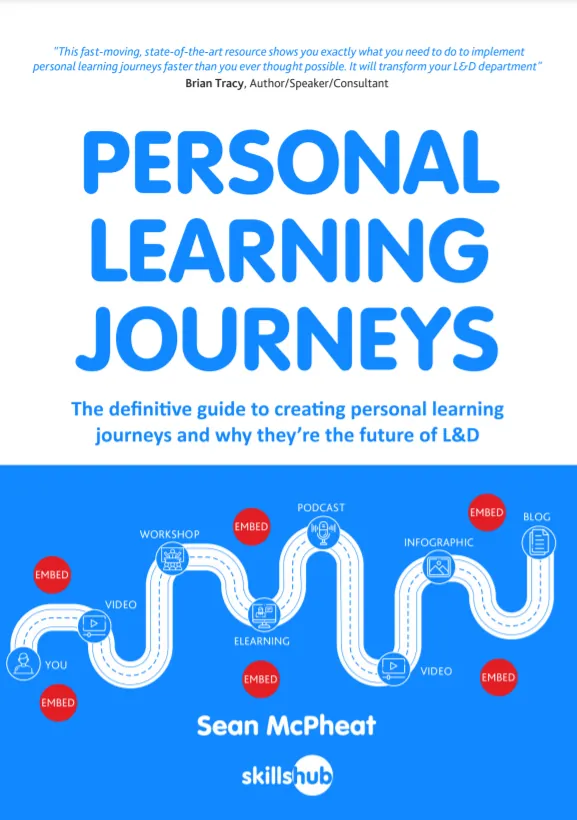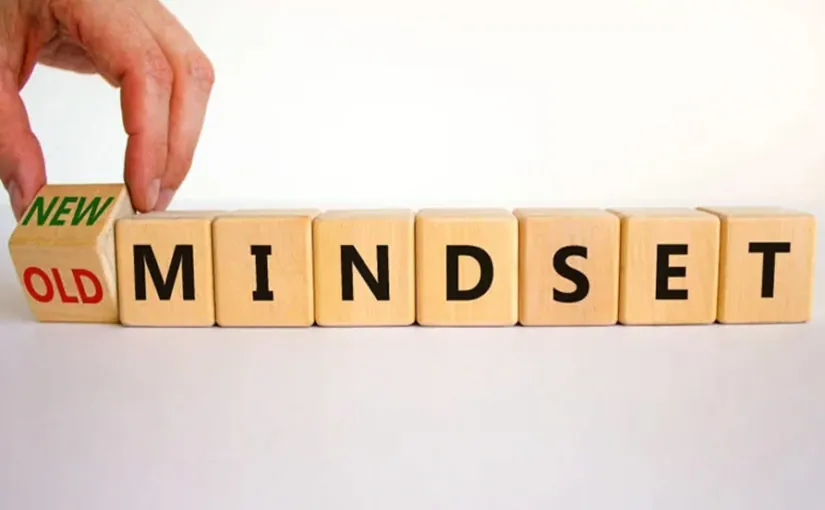
Imagine a learner-centered approach to education, where the focus shifts from traditional lecturing to engaging students more effectively.
Picture a typical classroom. You’re likely envisioning an instructor standing at the front and lecturing while the students take notes. Traditional learning has its benefits, but it also does not centre the student or learner as much as it could.
Most eLearning companies today are pioneering this transformative shift, sculpting courses that aren’t just repositories of information, but journeys of discovery tailored to each learner.
In this guide, you’ll learn more about what a learner-centred approach to instruction is, its benefits, and how you can implement it into your training strategy.

Understanding the Learner-Centred Approach
Let’s begin with a definition of a learner-centred approach.
Here are some of the most important things to keep in mind:
What Is a Learner-Centred Approach?
Put simply, a learner-centred approach emphasises the experience of the learner or student. Instructors who practise this style see learners as active agents who bring their own knowledge and ideas to the learning process.
There are five key “domains” of learner-centred instruction:
- Role of the teacher: The instructor focuses on the students’ learning.
- Balance of power: The instructor shares learning-related decision-making with the students.
- Function of learning content: The content is used to establish a knowledge base, develop learning skills, and promote learner self-awareness.
- Responsibility: Instructors work to create environments that motivate learners to accept responsibility for their education.
- Evaluation: Evaluation activities promote learning and encourage self- and peer-assessment abilities
There are a few different methods that learner-centred instructors can use as well, including the following:
- Active learning: Students are highly engaged, solving problems, coming up with and answering questions, discussing topics, brainstorming, etc.
- Cooperative learning: Students work together in pairs or teams to solve problems or complete projects.
- Inductive teaching and learning: Students are presented with challenges and then taught through inductive methods, such as inquiry-based learning, problem-based learning, case-based instruction, and project-based learning.
How Does the Learner-Centred Approach Differ from Traditional Teaching Methods?
Unlike traditional learning, which tends to view students as “blank slates,” learner-centred learning understands that everyone comes with their own experiences and ideas that inform what they take in and how they apply it.
Learner-centred instructors also take different learning styles into account. They acknowledge that everyone learns differently, and they try to offer options for various students, whether they prefer to learn independently, through discussion, through doing, etc.
Benefits of Adopting a Learner-Centred Approach
Trainers, managers, team leaders, and others in charge of instruction – as well as their team members or trainees – can benefit from adopting a learner-centred approach in several ways, including the following:
1. Improved Learner Engagement
Learner-centred teaching, naturally, leads to an increase in the learner or – when it’s utilised in a corporate setting – employee engagement.
When you picture a traditional classroom in which a teacher is lecturing to a group of students, you likely also picture many of those students staring off into space and passively absorbing information.
A learner-centred approach flips that picture on its head and requires students to be more engaged in their own education.
2. Increased Motivation
Because they’re more engaged, learners are typically more motivated in a learner-centred environment as well.
They understand that they must be active participants in their education. This understanding, in turn, encourages them to set and work toward specific goals and take in more information than they likely would have otherwise.
3. Improved Knowledge Retention and Application
When learners are more engaged and motivated, they typically retain more information and can apply it in real-life scenarios more effectively.
Traditional learning environments might help students memorise information for an exam. They can also create a situation in which those students forget that information as soon as they’ve completed the exam and don’t know how to use it to their advantage.
4. Improved Problem-Solving Skills
Students who learn in a learner-centred environment have more opportunities to develop their problem-solving skills.
Instead of just being presented with information and being told to take notes, learners have more opportunities to look at problems from different perspectives and find multiple solutions. These opportunities allow for better knowledge application as well.
5. Better Collaboration and Teamwork
Many instructors who use a learner-centred approach encourage students to learn by discussing topics with others or by working in groups to solve problems.
This strategy gives students more opportunities to collaborate and develop their communication skills. Better communication, in turn, can lead to increased productivity, better results on projects, and more.


How to Create a Learner-Centred Environment
At this point, you may see the advantages of learner-centred instruction, but you might also be wondering how you can incorporate it into your training approach.
The following are some practical tips and strategies you can use to cultivate a learner-centred environment:
Role of Trainers/Educators
Trainers and educators still play essential roles in learner-centred environments. Just because they’re not lecturing at the front of the room doesn’t mean they’re not necessary.
When they take a learner-centred approach, instructors tend to act more as coaches.
They work with students to help them understand and apply information instead of simply talking to them and hoping they retain the knowledge needed to pass an exam.
Tools and Technology
Instructors can utilise a variety of tools and technologies to help them successfully create a learner-centred environment.
For example, eLearning platforms provide access to a range of courses and can cater to multiple learning styles at once – meaning that students can learn in the way that works best for them.
These tools can also help students learn at their own pace, which helps them retain and apply knowledge taught in the course.
Give Students a Voice
Effectively implementing a learner-centred approach involves students having a voice. They must be able to provide feedback on the way information is delivered, whether or not a particular learning style is beneficial to them, etc.
If students don’t feel that their input matters, they’re less likely to be engaged (and less likely to reap the other advantages of learner-centered instruction).
Encourage Risk-Taking
A learner-centred environment should not be overly prescriptive.
Students should be encouraged to experiment and take risks without worrying about making mistakes or being wrong.
Experimentation is a crucial component of learning, after all, and helps students be more engaged throughout the class, course, etc.
Be Flexible
Educators and trainers must be flexible when working to create a learner-centred environment. In the same way that they should let students experiment and try new things, they should be willing to do the same, particularly when trying out learning modalities that help students gain more knowledge.
Again, being overly prescriptive can limit student engagement and prevent them from learning and retaining as much information as they could in a different setting.
Respect Learners’ Uniqueness
Part of being a flexible instructor is having and showing respect for learners’ unique learning styles. Learner-centred instruction encourages students to learn in their own way – the way that helps them retain more information and make more progress toward their goals.
Promote Cooperation
To create a learner-centred environment, instructors must create multiple opportunities for students to collaborate and cooperate. They might do this by encouraging them to work in pairs or small groups, discuss topics with the person sitting next to them, role-play certain scenarios, etc.


Learn How To Create Personal Learning Journeys For FREE!
Tailoring Learning Content to Individual Needs
A critical aspect of learner-centred instruction is tailoring elearning content to individual needs. The following are some strategies to help instructors personalise learning materials:
Learning Style Assessments
For instructors to tailor content effectively, they must first understand how their students learn. Using assessments to identify different learning styles helps trainers and educators understand how they can customise their teaching approach to foster engagement and produce better results.
These assessments also empower students to understand their unique learning styles and help them figure out how to retain more information in the future.
Customised eLearning Content
The use of customised eLearning content also helps to make instructors’ jobs easier. This technology allows them to cater to different learning styles without having to create a range of lesson plans from scratch.
eLearning content that is built around adaptive learning principles is especially beneficial.
For example, Skillshub allows instructors to create personalised learning journeys based on students’ specific needs. It also features self-directed learning tools that empower students to gain knowledge in the ways that make the most sense for them.
Feedback and Reflection
Remember that one of the most important factors to keep in mind when developing a learner-centred environment is giving students a voice. Continuously collecting feedback gives instructors a chance to reflect on and improve their approach and make it more effective.
Reflection also matters for students. Learner-centred instruction involves frequent self-assessments to help students monitor their progress, identify areas that need improvement, set specific learning objectives, and achieve better outcomes.


Overcoming Challenges in Implementing Learner-Centred Approaches
No teaching style is without its challenges. Here are some examples of challenges instructors might face when adopting a learner-centred approach (with tips on overcoming them):
Mindset Shifts
Initially, some students and instructors might be wary of a more learner-centric approach. Many people have never learned in this way, and it might seem like it’s too much work or that it’s ineffective at first.
Highlighting the benefits of learner-centred instruction can help to ingratiate learners and trainers to this methodology.
Difficulty Measuring Progress
Some instructors and learners struggle with learner-centred training because it can be harder to measure progress when you’re relying on the standard lecture and exam model.
Creating a transparent system for monitoring progress can help to combat this issue. For example, instructors might test employees’ understanding of a particular topic by asking them to role-play a specific scenario or describe how they would respond.
eLearning technology can also help combat this challenge by providing instructors with valuable data, including assessment scores, to help them track progress and performance.
Difficulty Providing Sufficient Support
When teaching large groups, a learner-centred approach can be complex because it makes it harder for instructors to provide sufficient support to each student.
This situation is another one in which eLearning technology and the data it provides can come in handy. Teachers can use this data to see which students are struggling the most and need more resources.
The Future of Embracing Learner-Centred Approaches
Learner-centred instruction will undoubtedly have its place on the list of future learning and development trends. Here are some examples of how learner-centred teaching will show up in the coming years, particularly in corporate circles:
Employee onboarding
Trainers can use a learner-centred process during onboarding to learn more about new employees, their learning styles, their approach to problem-solving, etc. A learner-centred approach will also help new team members get to know each other and their coworkers faster and help them get acclimated to the new work environment sooner.
Continuing Education
Training doesn’t stop after onboarding. Corporate employees undergo regular training courses to develop new skills, learn how to use new tools and technologies, and more. Learner-centred training can help employees stay more engaged during these training sessions and ensure they get as much out of them as possible.
Leadership Training
Learner-centred education can also be used in leadership training courses, too. This approach can even help instructors identify those who are best equipped to succeed in leadership roles in the future because they get a chance to see how these employees solve problems, collaborate with peers, and address difficult topics.
Final Thoughts
A learner-centred approach offers many benefits to instructors and students. It gives students a chance to learn in the way that works best for them, and it provides instructors with more opportunities to collaborate with learners and learn from them and their past experiences.
Use the guidelines shared here to simplify the process of adopting a learner-centred approach and incorporating it into your training sessions, lesson plans, etc. Remember the importance of technology in learner-centred instruction, too. The right tools can make the transition easier and more effective.
If you’re seeking learner-centred tools and technologies, Skillshub has you covered with a variety of options, including virtual training, and custom elearning development.
Contact us today for more information and discover how we can elevate your learning initiatives.













